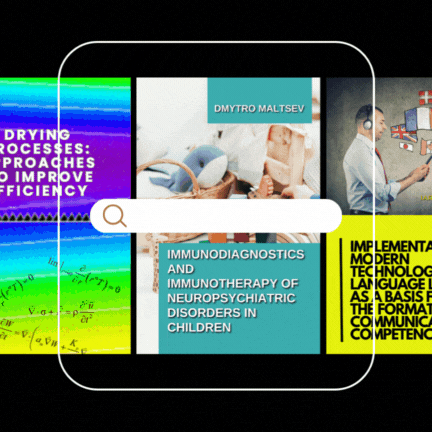Ідентифікація авторства
1. Ідентифікація та внесок авторів
Під ідентифікацією авторства розуміється отримання запевнень щодо того, що кожен автор авторського колективу рукопису зробив свій внесок у дослідження, у певній його частині. У разі виникнення сумнівів з боку редакції, які можуть ґрунтуватися, зокрема, на невідповідності змісту рукопису компетенціям когось із авторів у галузі науки, сфери наукових інтересів, інших публікацій даного автора, редакція вимагає від авторського колективу надати додаткові дані з розподілом внеску у проведення дослідження та підготовку рукопису, з окремим акцентом на внесок автора, щодо якого виникли сумніви.
Гарантії авторства закріплюються Ліцензійним договором між Ліцензіаром (авторами) та Ліцензіатом (Видавець). Внесок авторів повинен бути зафіксованим у відповідному розділі статті відповідно CRediT (Таксономії ролей авторів).
Повний перелік внесків авторів відповідно CRediT наведено нижче:
- Концептуалізація: ідеї; формулювання або еволюція загальних цілей та завдань дослідження
- Методологія: розробка або проектування методології; створення моделей
- Програмне забезпечення: програмування, розробка програмного забезпечення; проектування комп'ютерних програм; реалізація комп'ютерного коду та допоміжних алгоритмів; тестування існуючих компонентів коду
- Перевірка: перевірка, як частина діяльності або окремо, загальної повторюваності/відтворюваності результатів/експериментів та інших дослідницьких результатів
- Формальний аналіз: застосування статистичних, математичних, обчислювальних або інших формальних методів для аналізу або синтезу даних дослідження
- Розслідування: проведення дослідницького та розслідувального процесу, зокрема проведення експериментів або збору даних/доказів
- Ресурси: надання дослідницьких матеріалів, реагентів, матеріалів, пацієнтів, лабораторних зразків, тварин, обладнання, обчислювальних ресурсів або інших аналітичних інструментів
- Курування даних: управлінська діяльність з анотування (створення метаданих), очищення даних та підтримки дослідницьких даних (включаючи програмний код, де це необхідно для інтерпретації самих даних) для початкового використання та подальшого повторного використання.
- Написання – Підготовка чернетки: Підготовка, створення та/або презентація опублікованої роботи, зокрема написання початкового варіанту (включаючи суттєвий переклад)
- Написання - Рецензування та редагування: підготовка, створення та/або презентація опублікованої роботи членами оригінальної дослідницької групи, зокрема критичний огляд, коментарі або редагування – включаючи етапи до або після публікації
- Візуалізація: підготовка, створення та/або презентація опублікованої роботи, зокрема візуалізація/презентація даних
- Нагляд: нагляд та лідерська відповідальність за планування та виконання дослідницької діяльності, включаючи наставництво поза основною командою
- Адміністрування проєкту: відповідальність за управління та координацію планування та виконання дослідницької діяльності
- Залучення фінансування: отримання фінансової підтримки для проєкту, що призвело до цієї публікації
Зі складу авторського колективу має бути виділений автор-кореспондент, який виступає від імені всього авторського колективу з будь-яких питань взаємодії з редакцією. Він несе відповідальність за те, щоб були досягнуті всі угоди, що стосуються регламенту Видавця щодо перетворення рукопису на статтю та подальшої її публікації, а також на етапі після опублікування статті, якщо така потреба виникне. Якщо виникає обґрунтована з боку авторів необхідність видалення або додавання співавторів, або зміна порядку авторів, такі зміни після подання рукопису можливі лише зі схвалення кожним автором.
Процес ідентифікації авторства передбачає також недопущення появи у складі авторського колективу авторів-примар, авторів-гостей та авторів-подарунків.
2. Недопустимість внеску генеративного ШІ
Інструменти генеративного штучного інтелекту (далі – інструменти ШІ), такі як Large Language Models (LLM), не відповідають критеріям авторства, бо не мають відповідного внеску для того, щоб вважатись автором, а також їх приналежність до авторства не може гарантуватись підписанням Ліцензійного договору. Використання ШІ авторами рукопису не повинно суперечити політиці редакції та повинно бути задекларовано у відповідному розділі статті.
Ця процедура є стандартною для початку роботи з рукописом.
3. Внесок померлого автора
Якщо один з авторів рукопису помер до подання рукопису в редакцію журналу, його внесок в дослідження, розробку або написання рукопису тощо повинен бути чітко відображений в розділі Подяки. Померлий автор не може бути включений до списку авторів, так як ступінь змін, внесених до рукопису після смерті співавтора, не може бути їм оцінена і не можливо дійти висновку чи була б отримана абсолютна згода померлого автора на подання остаточної версії рукопису. Крім того рукопис може бути змінений в ході редакційного процесу, а саме авторами можуть бути внесені зміни в змістовну частину рукопису відповідно до зауважень редакторів та рецензентів, які також не можливо буде узгодити з померлим автором.
За умови, якщо внесок померлого автора є вагомим, використання твору здійснюється виключно з дозволу суб’єкта авторського права або іншої уповноваженої на надання такого дозволу особи, крім випадків правомірного використання твору без такого дозволу, встановлених законодавством України. В такому випадку померлий автор може бути включений до списку авторів з відповідною приміткою про дату його смерті, а ліцензійний договір та дозвіл на публікацію остаточної версії рукопису (Твору) здійснюється спадкоємцем.
У разі виникнення ситуацій, які не описані вище та ймовірно не передбачені заздалегідь, в частині реальності авторства в даному рукописі, редакція приймає дії на основі чинного законодавства України та рекомендацій COPE, членом якої є видавець ПП «ТЕХНОЛОГІЧНИЙ ЦЕНТР».








